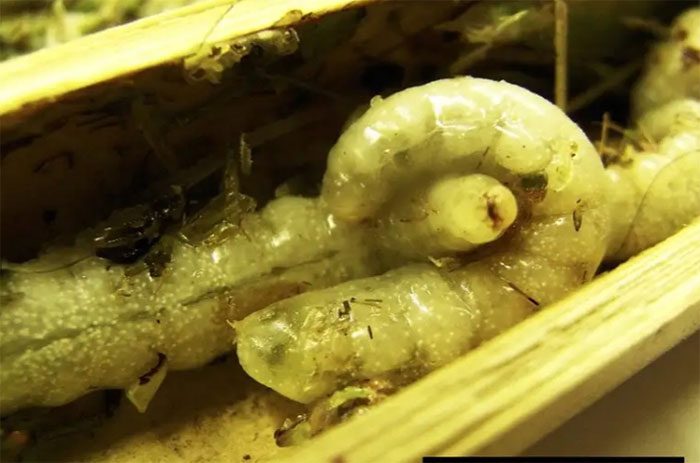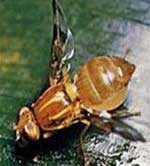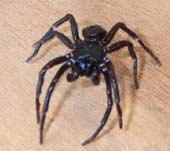When confined by their mother in a cramped space, Isodontia harmandi larvae are ready to cannibalize their siblings.
In “larval nurseries” within tree cavities, female Isodontia harmandi—a solitary wasp species—do not live communally but instead lay about a dozen eggs inside a paralyzed insect’s body.
Afterward, the mother adds more insects to the nursery before sealing it with some moss. This confinement of larvae in such a tight space creates fierce competition for food.

Isodontia harmandi larvae cannibalize each other to grow. (Photo: Tomoji Endo)
Recent research has shown that Isodontia harmandi larvae often kill each other to ensure they have enough nutrients.
According to scientist Tomoji Endo from Kobe University, the author of the study, there had been previous records of cannibalism in this species, but “very little evidence.”
To prove this, Endo and his colleague Yui Imasaki collected Isodontia harmandi nests from various locations across central Japan from 2010 to 2015. They waited for the female wasps to lay eggs inside before bringing the “nurseries” into the laboratory to monitor the larvae’s development.
Observations revealed the cannibalistic behavior of Isodontia harmandi larvae. Specifically, the larvae that cannibalized their siblings were generally larger than the ones they consumed.
“We were shocked to see that wasp larvae frequently cannibalize each other in their nests. We were surprised that there was no clear aggressive interaction between the predator and the victim. The larvae seem to accept their fate without fighting,” Endo stated.
Endo and Imasaki also discovered that cannibalism often occurred in cells with multiple larvae and was less common when the food provided by the mother consisted of nectar, plants, and small insects.
The researchers hypothesized that female Isodontia harmandi intentionally produce many offspring to ensure that their young can grow by eating their siblings. This way, the young larvae can avoid starvation if traditional food sources run low.




















































